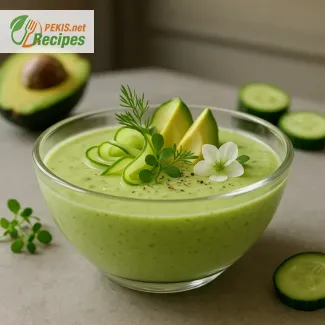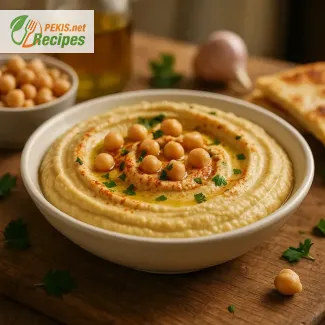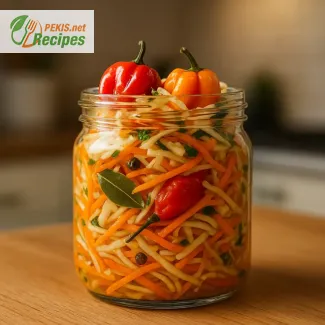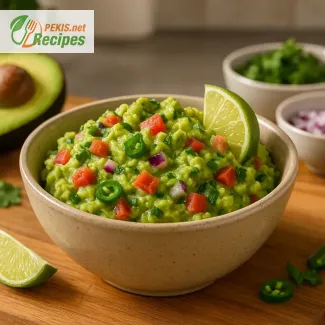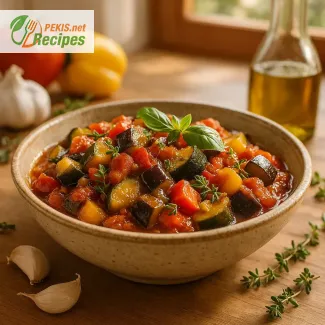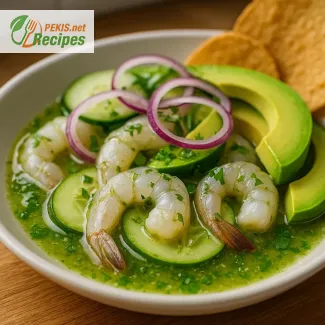
Discover the Flavor Depth of Traditional Mexican Aguachiles
A bold appetizer of marinated shrimp in vibrant lime and chile
Aguachiles is one of the most iconic seafood dishes from Mexico’s Pacific coast, known for its explosive flavor, refreshing acidity, and spicy kick. It’s not just a dish — it’s a sensory experience that combines the natural sweetness of raw shrimp with the zing of freshly squeezed lime juice and the heat of green chilies or serranos. Unlike ceviche, which marinates for longer, aguachiles are served immediately after preparation, maintaining the delicate texture of the shrimp while delivering bold flavor from the first bite.
Originally hailing from the coastal regions of Sinaloa and Nayarit, this spicy delicacy has taken on regional variations and now appears on menus far beyond Mexico, from Los Angeles to Madrid. In traditional Mexican cuisine, aguachiles verdes (with green chili and cilantro) and aguachiles rojos (with red chili and spices) are two of the most beloved versions, often served chilled in a bowl and topped with sliced cucumbers, red onions, and fresh herbs. The combination of acid, spice, and umami from shrimp makes this dish perfect as a light starter or a refreshing main course during warm weather.
The best aguachiles recipe uses the freshest shrimp, ideally raw and cleaned, which are quickly "cooked" in lime juice. The acidity denatures the proteins in the shrimp, creating a tender, firm texture while preserving the sea-like taste that sets aguachiles apart from other marinated seafood dishes. Fresh lime juice, not bottled, is essential, as it delivers both the acidic punch and aromatic complexity that elevate the dish. The chili peppers – usually serrano or jalapeño – can be adjusted for heat, and cilantro adds a green freshness that balances the fire.
A fusion of freshness and fire
One of the secrets behind authentic aguachiles is timing. The dish is meant to be prepared fresh and served immediately, preserving the full vibrancy of its ingredients. When shrimp sit too long in citrus, they lose their natural texture and begin to toughen. That’s why aguachiles are often prepared to order in Mexico’s coastal eateries — they’re meant to be eaten fast, with flavor that hits fast.
Many modern takes on aguachiles incorporate ingredients like avocado, radishes, mango, or even habanero for extra heat. These creative versions maintain the dish’s foundational identity while adding visual contrast and textural layers. Served cold in a shallow bowl or plate, aguachiles are typically eaten with tostadas or salted crackers, which soak up the flavorful marinade and provide crunch.
More than just Mexican ceviche
Though often compared to Mexican ceviche, aguachiles stands on its own as a bold, fiery cousin. Ceviche often includes tomatoes, fruits, or oil-based sauces and takes longer to marinate. Aguachiles are sharper, spicier, and more immediate, offering a burst of fresh lime and chili heat with every bite. It’s a dish designed for those who crave intensity, balanced by the cooling elements of cucumber and the clean protein of shrimp.
For this reason, aguachiles has gained popularity in wellness communities, too, especially those favoring raw and clean-eating diets. With no added sugars, oils, or processed ingredients, it fits naturally into a whole-foods-based lifestyle. Yet its flavor is anything but minimal — it's a dish that delivers maximum impact with a handful of simple, natural components.
The essentials of an authentic aguachiles experience
- Fresh shrimp (raw, cleaned, and butterflied) are the heart of the dish. Their quality determines the outcome.
- Freshly squeezed lime juice should be abundant enough to fully coat and cure the shrimp evenly.
- Chili peppers (usually serrano, but jalapeños or even Thai chilies can be used) bring heat and depth.
- Cilantro and cucumber add coolness and fragrance, creating contrast with the spicy marinade.
- Red onion slices, often soaked briefly in lime or cold water, enhance the sharp flavor and visual appeal.
Optional ingredients like avocado or fruit bring regional flair and seasonal variety, but the traditional base is simple and pure. The real complexity of aguachiles comes from how the elements interact on the tongue — acid cuts through protein, heat awakens the palate, and herbs round out the flavor.
Serving tips for maximum impact
For the best presentation and taste, aguachiles should be served cold in chilled bowls or plates. Add the shrimp just before serving and spoon the marinade over the top. Garnish with thin cucumber slices, a sprig of cilantro, and paper-thin red onion rings. Serve with crispy tostadas or tortilla chips, and accompany with a cold Mexican lager or agua fresca.
This dish is perfect for summer gatherings, as a show-stopping appetizer, or even as a main when paired with grilled corn or fresh avocado salad. Its versatility, combined with its dramatic presentation, makes it a favorite for those seeking vibrant, spicy seafood dishes that feel both gourmet and effortlessly fresh.
Step 1: Prepare the shrimp
Rinse the raw shrimp under cold water. Peel, devein, and butterfly them by slicing them lengthwise through the center without cutting all the way through. Pat dry with a paper towel.
Step 2: Make the marinade
In a blender, combine lime juice (180 ml / ¾ cup), chopped serrano chilies (2), garlic (1 clove), cilantro (15 g / ½ cup), salt (5 g / 1 tsp), black pepper (1 g / ¼ tsp), and cold water (60 ml / ¼ cup). Blend until smooth.
Step 3: Marinate the shrimp
Place the shrimp in a non-metallic bowl and pour the blended marinade over them. Mix well to ensure all shrimp are coated. Let them sit for 15–20 minutes until they turn opaque and firm from the citrus.
Step 4: Prepare the vegetables
While the shrimp are marinating, slice the cucumber (200 g / 7 oz) and red onion (100 g / 3.5 oz) thinly. Optionally, soak the red onions in a little lime juice to soften their flavor.
Step 5: Assemble the dish
Once the shrimp are cured, layer them in a serving dish with sliced cucumber, red onion, and avocado (200 g / 7 oz). Spoon some of the marinade over the top.
Step 6: Serve immediately
Serve cold with tostadas or tortilla chips on the side for added crunch.
Elevate Your Aguachiles: Creative Variations and Pro Chef Tips
How to upgrade the flavor, nutrition, and balance of your spicy shrimp dish
Making aguachiles at home opens the door to countless creative and healthy variations that go beyond the traditional recipe. While the classic method — fresh shrimp marinated in lime, chili, and herbs — is bold and refreshing, small tweaks can dramatically shift the flavor profile, texture, and nutritional value of the dish. By selecting the right ingredients, adjusting preparation techniques, and learning from common mistakes, you can craft a version of aguachiles that not only suits your taste but also feels uniquely yours.
Ingredients that transform: subtle changes, bold results
Adding or swapping ingredients can refine the flavor without compromising the authentic character of the dish. For example:
- Roasted chili peppers instead of raw serranos mellow the heat and add a layer of smokiness. Lightly charred jalapeños or poblanos work especially well for a deeper, more rounded taste.
- Incorporating mango or pineapple lends natural sweetness that balances the sharp acidity of the lime and the fire of the chilies. This version, often found in coastal tropical regions, adds complexity and brightens the presentation.
- Blending in avocado directly into the marinade, not just as a topping, introduces creaminess and healthy fats, smoothing the edges of the citrus.
- Swapping out lime with a mix of lime and orange juice softens the sharpness and adds subtle sweetness, ideal for those sensitive to intense acidity.
- Replacing part of the shrimp with thinly sliced scallops or white fish (such as snapper) introduces a luxurious touch and varied texture. These ingredients absorb flavors differently and can add elegance to the dish.
Each of these adjustments makes aguachiles more layered and personal, allowing you to create a signature dish.
Why homemade is always better
While aguachiles are becoming popular in restaurants, especially in fusion menus, preparing it at home gives you complete control over ingredient quality and customization. Home-prepared aguachiles allow for:
- Freshness control: You can select high-quality, sustainably sourced shrimp and prepare them immediately, ensuring the best taste and safety.
- Adjustable spice level: Tailor the heat to your preference, whether you're cooking for spice lovers or guests with milder palates.
- Cleaner ingredients: No preservatives, excess sodium, or added sugars that sometimes sneak into restaurant versions.
- Personal creativity: Experiment with herbs, garnishes, and plating styles to reflect your own culinary identity.
Moreover, the ritual of marinating and assembling the dish fresh brings a satisfying element to the experience that takeout simply can’t replicate.
Mistakes to avoid when making aguachiles
Even though the recipe appears simple, several small errors can negatively affect the final result. The most common mistakes include:
- Over-marinating the shrimp: Leaving shrimp in lime juice for more than 30 minutes causes them to become tough and rubbery. Always cure them briefly, just until they turn opaque.
- Using bottled lime juice: Pre-packaged juice lacks the brightness and aromatics of fresh citrus and can make the dish taste flat.
- Not deveining the shrimp properly: This affects texture and presentation. Butterflying the shrimp also helps them absorb flavor faster and more evenly.
- Blending marinade too long: Over-processing the marinade causes bitterness, especially if chili seeds or stems are included. Blend just enough to combine.
- Incorrect chili balance: Using only very hot chilies (like habaneros) can overpower the shrimp. It’s best to start with serranos or jalapeños, then increase heat if needed.
By focusing on freshness, timing, and ingredient quality, you’ll avoid these pitfalls and highlight the strengths of the dish.
Healthier alternatives without compromising flavor
Aguachiles is naturally low in carbs and high in protein, but you can still enhance its nutritional profile:
- Use organic shrimp or wild-caught shrimp for lower exposure to antibiotics and a cleaner taste.
- Replace tostadas with lettuce cups or sliced radishes to reduce refined carbs and add a refreshing crunch.
- Add more greens like arugula or watercress to introduce bitterness that contrasts beautifully with the acidity.
- Substitute sea salt with pink Himalayan or low-sodium salt for better mineral content.
- Include chia seeds or flaxseed oil in the marinade for a subtle nutty flavor and a boost of omega-3 fatty acids.
These alternatives keep the dish light and clean, making it suitable for people with dietary sensitivities or those following anti-inflammatory meal plans.
Texture and presentation: the visual and sensory upgrade
Beyond flavor, texture and visual appeal play a central role in how aguachiles is experienced. Layering the shrimp with ultra-thin cucumber slices, shaved radish, and avocado fans creates a restaurant-quality look while adding varied bite. For garnish, consider:
- Microgreens or baby cilantro for a refined finish
- Toasted sesame seeds for a nutty crunch
- Thin lime wheels for aesthetic and added aroma
- Chili oil drops for spice lovers and extra color contrast
Plating matters too. Serve aguachiles in shallow ceramic bowls or slate platters to make the colors pop and allow for even spooning of the marinade.
Customize the experience to your season or mood
Aguachiles is more than just a summer dish. Depending on the time of year, you can infuse the recipe with seasonal ingredients:
- In summer, add mango, mint, or grilled corn
- In autumn, try pickled onions and pomegranate seeds for sweetness and acidity
- In spring, include edible flowers or fresh peas for a delicate twist
- In winter, pair with warm grains like quinoa or wild rice for a contrast in temperature and texture
These seasonal adjustments bring freshness to the table and keep the dish interesting all year long. The key to improving aguachiles lies not in changing its essence, but in understanding how its core ingredients — shrimp, lime, chili, and herbs — can be complemented with creative variations, thoughtful presentation, and attention to detail.
Allergens present in the recipe:
- Shellfish (shrimp)
- Possible traces of gluten (if served with wheat-based tostadas or chips)
Tips to eliminate allergens and gluten:
- Replace shrimp with mushrooms or hearts of palm for a vegan, shellfish-free version.
- Use gluten-free tortilla chips or serve on lettuce cups instead of wheat tostadas.
Vitamins and minerals per serving (approximate):
- Vitamin C – 40 mg: Supports immune health and iron absorption
- Vitamin E – 2 mg: Helps protect cells from oxidative stress
- Vitamin B12 – 1.2 µg: Important for red blood cell formation
- Potassium – 500 mg: Helps regulate fluid balance and nerve function
- Magnesium – 40 mg: Supports muscle and nerve function
- Iron – 1.8 mg: Supports oxygen transport in the blood
- Zinc – 1.2 mg: Contributes to immune function and wound healing
Antioxidants per serving (approximate):
- Lutein + Zeaxanthin – 250 µg: Support eye health and reduce oxidative damage
- Beta-carotene – 750 µg: Converts to vitamin A, protects skin and vision
- Quercetin (from red onion) – 20 mg: Anti-inflammatory and antiviral properties
- Capsaicin (from chilies) – 5 mg: Supports metabolism and reduces inflammation
